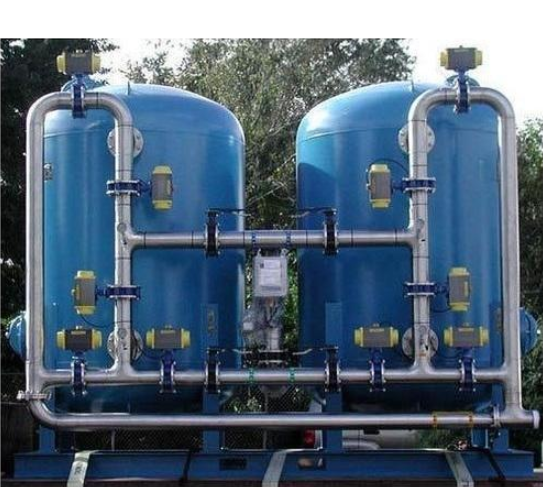South Africa faces a water crisis of immense proportions, a dire situation fuelled by a confluence of challenges. Unevenly distributed water resources, exacerbated by unpredictable rainfall patterns due to climate change collide with the burden of outdated and deteriorating infrastructure, threatening to tip South Africa from being water-stressed, to water-scarce. This will undoubtedly impact vulnerable populations disproportionately, particularly in rural areas, highlighting the urgent need for robust and multifaceted interventions.
The impact of climate change on our water woes
Climate change acts as a major catalyst, amplifying existing vulnerabilities. Erratic rainfall patterns disrupt water availability, leading to both devastating floods and prolonged droughts. Floods overwhelm South Africa’s already fragile infrastructure, disrupting sanitation services and causing widespread contamination, while droughts deplete water reserves, limiting access to clean water for basic needs like drinking and hygiene.
This is especially worrisome for rural communities who already struggle with inadequate sanitation infrastructure, as stated by the United Nations, approximately 4.2 million people in South Africa lack access to safe drinking water, and 21 million do not have access to basic sanitation facilities.
Further compounding the issue is South Africa’s ageing water infrastructure. Due to a lack of maintenance, it is estimated that leaking pipes result in the wastage of up to 40% of treated water before it reaches the consumer. This bleeds precious resources, while inadequate treatment plants compromise water quality. This already fragile system buckles under the pressure of climate-induced extreme weather events like intense storms, leading to service disruptions and further jeopardising water security.
South Africa is thirsty for solutions
Addressing such a potentially devastating crisis requires a multi-pronged approach that encompasses both immediate and long-term strategies.
Investing in robust and climate-resilient water systems
Upgrading infrastructure to better manage erratic weather patterns is paramount. This includes maintaining stormwater infrastructure, building new dams with improved capacity to cope with floods and droughts, as well as repairing existing ones to minimise leakage. Exploring alternative water sources like desalination plants for water-intensive industries such as coal mining, while ensuring responsible environmental practices, could provide some relief in water-scarce regions.
However, careful consideration must be given to the long-term sustainability and potential environmental impact of desalination. Investing in smart water management technologies like real-time monitoring systems, leak detection tools, and pressure management techniques can optimise water distribution and minimise waste.
Addressing the sanitation challenge
A pivotal element of tackling South Africa’s water crisis lies in shifting the paradigm surrounding sanitation. Currently, the widespread use of flush toilets, even low-flow models, consumes significant amounts of freshwater (as much as 20% of our treated water), placing an unsustainable burden on already strained water resources.
Tackling this challenge requires the promotion of alternative sanitation solutions and water-efficient sanitation technologies to significantly reduce freshwater consumption while ensuring proper waste management. This will require a mindset shift, through public education campaigns and community engagement that challenge the perception of flush toilets as the only viable sanitation option. By highlighting the environmental and resource implications of conventional sanitation, we can encourage a shift towards water-efficient alternatives. To this end, it will be necessary to invest in research and development of innovative, low-water sanitation solutions tailored to the specific needs and contexts of South African communities in a sustainable fashion.
Embracing water-efficient solutions
This means promoting drought-resistant agricultural practices that use less water. Drip irrigation and precision farming techniques can significantly reduce water consumption in the agricultural sector, which is a major water user. We must also urge businesses and households toward using water-saving technologies such as low-flow toilets and showerheads, water-efficient appliances, and rainwater harvesting systems, which can collectively contribute to substantial water savings.
Fixing leaky infrastructure remains a critical and cost-effective solution. Addressing the estimated 40% water loss through leaks in pipes can significantly improve water availability without requiring major infrastructure investments.
Empowering local communities
This can be done by fostering community ownership and participation in water management initiatives like rainwater harvesting, greywater reuse, and small-scale water treatment plants that empower communities to take responsibility for their water security, while promoting sustainable practices. Undertaking education and awareness campaigns can equip communities with the knowledge and skills necessary to conserve water and manage their resources effectively.
Climate change mitigation
Eskom alone uses 10 000 litres of water per second – the same amount a single person would use in one year. Given the clear connection between coal power and water scarcity, transitioning to renewable energy sources like solar and wind power can significantly reduce greenhouse gas emissions as well as the demand for water in coal production and energy generation.
This would mitigate the impacts of climate change on weather patterns, which would contribute to stabilising our water supply. It would also be prudent to implement sustainable land management practices like afforestation and soil conservation that can improve water retention in the soil and reduce the risk of both floods and droughts.
Further measures to mitigate climate change include the reduction of carbon emissions across all sectors, from transportation to industry. This is critical in addressing the root cause of climate change.
Addressing the interconnected challenges of water security
South Africa’s water crisis serves as a stark reminder of the global water security challenge. By acknowledging our country’s unique vulnerabilities, implementing the necessary interventions in a comprehensive and coordinated manner, and fostering a collaborative approach that integrates climate change mitigation, infrastructure fortification, community empowerment, and water-efficient practices, we can build a sustainable water future for South Africa.
